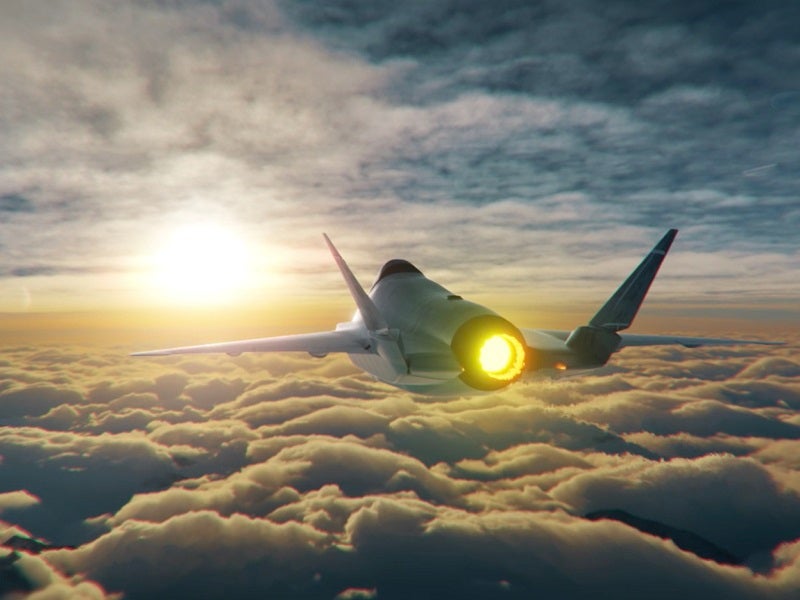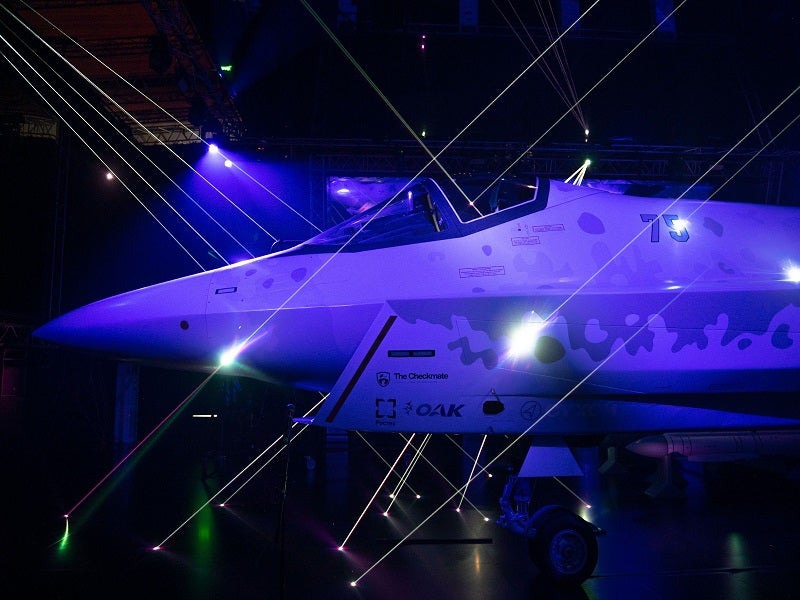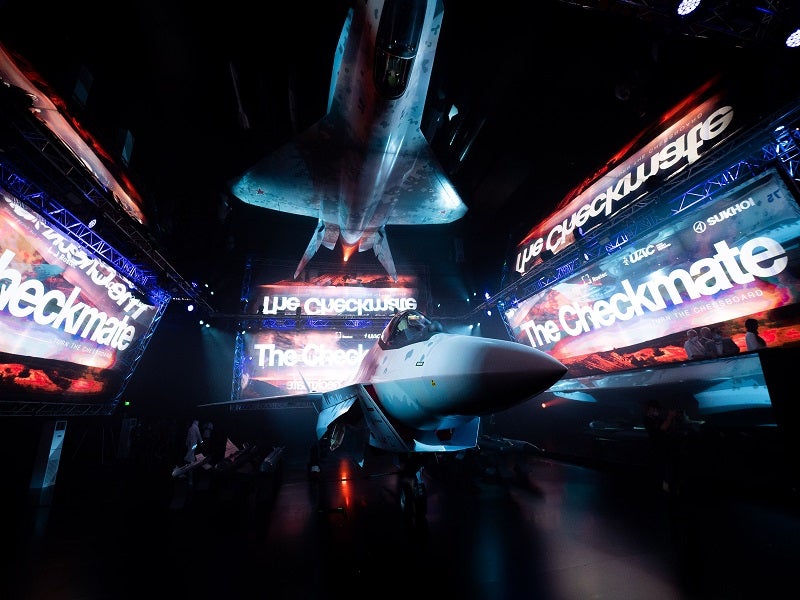The Su-75 Checkmate is a fifth-generation, futuristic single-engine light tactical advanced aerial combat aircraft being developed by Russian aircraft manufacturer Sukhoi. The stealth fighter jet will provide high performance and low per-hour operating costs.
The Checkmate aircraft was first unveiled at the MAKS 2021 international aviation show held in Zhukovsky, Russia in July 2021. A prototype was presented at the Dubai Airshow 2021, which marked the first overseas presentation of the aircraft.
The Sukhoi fighter’s first flight is expected in 2023 after the completion of a series of ground tests, while serial production is planned to start in 2026. The aircraft will be manufactured for the Russian armed forces as well as for export with about 300 units estimated to be produced for export over the next 15 years.
Design and features
The aircraft was designed indigenously using a supercomputer and modern-day virtual modelling and digital calculations, which significantly reduced the testing and building time to five years.
The design was developed leveraging the scientific and technical groundwork involved in the development of the export version of Su-57E fifth-generation fighter. The onboard systems, cockpit and certain other elements were derived from the Su-57E aircraft, reducing the cost and increasing the maintenance efficiency.
The aircraft has a length of 17.5m and a wingspan of 11.8m. The fighter’s fifth-generation onboard equipment (OBE) are designed with high noise immunity.
The Su-75 Checkmate aircraft can be deployed from difficult high-altitude airfields and in any climatic conditions. Its open architecture with high adaptability will provide scope for futuristic upgrades to the aircraft as well as the flexibility to create new configurations at optimal costs.
The airframe design allows for easier maintenance of the aircraft and requires fewer personnel for the maintenance procedures, which is expected to enhance the combat readiness of the aircraft.
The aircraft will be available for sale in a basic single manned version, as well as two-seater optionally manned and unmanned versions.
The tactical fighter jet will be able to operate in tandem with unmanned aerial vehicles (UAVs) in a networked setup. It will have the capability to control small drones, which will receive real-time information about the combat situation through transmission technologies and respond immediately.
Armament
The Checkmate aircraft can carry weapons to neutralise enemy command posts and sensitive assets. It has five hidden weapon bays and 11 external weapon attachment points. It has a combat payload carrying capacity of 7,400kg.
The aircraft is expected to launch guided as well as unguided weapons. The guided weapons to be carried include RVV-MD short-range missile with a range of approximately 40km, and RVV-SD medium-range missile with a range of 110km.
The Su-75 Checkmate combat jet can also be armed with precision weapons for ground target destruction including X-38MLE / MTE X-38MLE air-to-surface tactical guided missile (range of 70km), X-58USHKE anti-radar missile (range of 245km), Kh-59MK2 guided missile (range of 285km), and Thunder-A1 precision ammunition (range of 120km).
The aircraft can also destroy surface targets such as ships using the X-31PD missile (range of 250km) and Kh-35UE missile (range of 260km). The weapon bays can also accommodate guided bombs including KAB-250LG-E, К08BE, and К029BE to destroy ground-based targets from outside the air defence zone of the enemy. The unguided weapons that can be carried in the inner compartment include missiles from the S-8 / S-13 families and 100kg, 250kg and 500kg bombs.
Avionics onboard Su-75 Checkmate aircraft
The onboard panoramic touch screen displays provide situational awareness about the route, threats, targets, and the status of all systems. The cockpit and the onboard equipment are unified to simplify maintenance. Advanced avionics enable the aircraft to undertake versatile combat missions.
The Su-75 Checkmate combat aircraft features a logistics support system known as Matreshka. The artificial intelligence (AI)-enabled major onboard electronic equipment reduces the workload of the pilot by acting as a co-pilot. The intelligent support system continuously monitors the health of the important systems on the aircraft.
The automated Matreshka system reduces the operational cost and increases the after-sales maintenance efficiency. It leverages predictive analytics to detect potential defects, thereby enhancing the readiness and availability of the fleet.
Sensors/radars
The Su-75 Checkmate is equipped with an advanced multi-band passive detection system to neutralise the target without being detected.
The aircraft is also equipped with an active phased array radar (APAR) to track the targets even in areas with severe electronic interference. The radar enables the aircraft to attack up to six aerial targets simultaneously and track up to 30 targets.
The Checkmate aircraft is equipped with the KOEPS-75 optoelectronic sighting system designed and developed by Russian firm Shvabe. The sighting system is intended to aim aerial and ground-based targets.
Engine and performance
The Su-75 Checkmate aircraft is powered by a single engine with a thrust rating between 14,500kgf and 16,000kgf.
An auxiliary power unit (APU) autonomously powers the subsystems on the aircraft, which provides impressive take-off and landing capabilities due to its high thrust-to-weight ratio, wing elevating features, and reliable thrust-vectored engine.
The fighter jet has reduced take-off and landing distances. It can provide efficient manoeuvring capabilities up to 8g and maintain continuous supersonic flight.
The aircraft can attain a maximum speed of 1.8 Mach (2,205km/h) and an operational range of more than 2,800km without an additional fuel tank.










